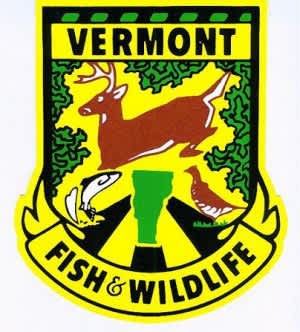Vermont Looks to Improve Fish & Wildlife Management with Enactment of New Lands Rule
OutdoorHub 02.06.13

Starting in 2013, a new rule clarifies how people can use lands owned by the Vermont Fish & Wildlife Department and reinforces the management priorities for fish and wildlife conservation.
The rule, passed by the Fish and Wildlife Board on December 13, 2012, pertains to the 89 Wildlife Management Areas (WMAs), two conservation camps, and five fish culture stations, totaling more than 133,000 acres throughout Vermont. It does not affect state forests and parks, or other publically owned lands.
“The Department felt it was important to clarify the allowed and priority uses, particularly on Wildlife Management Areas,” said Patrick Berry, commissioner of the Fish & Wildlife Department. “We were seeing increased conflicts and uses of the property that were compromising the fish and wildlife values for which these properties had been conserved.”
Fish and wildlife based recreational activities such as hunting, fishing, trapping, and wildlife watching are encouraged under the rule on WMA lands. Other activities, such as berry picking, foraging for wild edibles, and collecting shed antlers, are also permitted under the new rule.
Wildlife Management Areas were purchased using funds collected from hunters and trappers for the purpose of conserving fish, wildlife, and their habitat. These dollars continue to fund conservation and management efforts on these lands.
“The department manages land first and foremost for the conservation of fish and wildlife, and we work to ensure that our WMAs represent a wide array of habitats essential for their survival,” said John Austin, lands and habitat program director for the Fish & Wildlife Department. “These lands are an important part of Vermont’s beautiful rural landscape and are appreciated by many Vermonters and non-residents who use them to enjoy our diverse wildlife resources.”
Although many WMAs already have an established history of other recreational uses such as mountain biking, rock climbing, or snowmobiling, the rule was written to ensure these activities would not have adverse impacts on wildlife or wildlife-based activities. They will still be permitted during certain times of year in designated corridors where they have been cleared by a biologist.
“We understand that we are an invited guest on these lands,” said Tom Stuessy, executive director of the Vermont Mountain Biking Association. “Mountain bikers have fantastic access in Vermont because we maintain a respect for the natural ecology of the areas we build trails. The pie of land-use in Vermont is sliced many different ways and we understand everybody can’t use all the land all the time.”
“We all enjoy a variety of outdoor activities throughout the year in Vermont,” added Berry. “By minimizing the impact of these activities, this rule helps ensure that our wildlife resources will be available for the next generation of Vermonters to enjoy. The new rule provides guidance that will afford us the opportunity to work collaboratively with various user groups to avoid conflict and promote appropriate outdoor recreational activities.”

